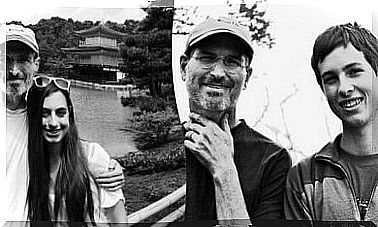“Hear Voices “, A Common Experience Even In Healthy People
For a few years a movement called “Listening voices”, “Hearing voices” or “Between voices” has been developing . This movement proposes to accept as something natural and normal within our perceptual spectrum the phenomenon of hearing voices or the experimentation of other unusual perceptions.
It was in the 1980s that the psychiatrist Marius Romme, his patient PAtsy Hage, and the journalist Sandra Escher carried out a television initiative in which “voice listeners” were invited to contact the group and share their experiences.
It was many people, counted in the hundreds, who dared to do it. Many of them said that they were able to handle these “unusual experiences”, while others had difficulty in doing so. (This certainly reminds us of the case of the famous mathematician John Forbes Nash).

The research that planted the seeds of the movement
This research paved the way for years for the emergence of the Voice Listeners Movement, which defends the need to advocate for an alternative attitude to overmedicalization and the treatment that is provided in much of today’s psychiatric services.
Thus, according to what they propose, it is neither healthy nor positive to confront voices or other “symptoms” in the way in which we are used to doing it. This is so because they are not a pathological symptom of any mental illness, although they occur in the presence of other signs or symptoms that do require a specific diagnosis (for example, schizophrenia).

In other words, although they are “unusual” experiences, they can be understandable and, therefore, related to problems or trauma suffered throughout life. For this reason, from the Movement of Voice Listeners, they propose that this type of perceptions do not have to be “taken from the spectrum of normal perceptual experiences.”
So what determines whether or not a person needs psychiatric treatment?
To answer this question, it should be clarified that this movement does not deny the need for there to be cases that need drug treatment, either because of the discomfort that is generated or because of the confluence of other problems that affect daily performance.
Thus, as stated on his page, Dr. Paolo Fusar-Poli, a consultant psychiatrist at a support and treatment point called OASIS (located in London) indicates that “ problems begin when hearing a voice adds to other aspects of mental health, such as anxiety and depression, as well as functional disability, drug abuse, traumatic events. .. all of which put the person in a position to seek help. At that point, you may need services like OASIS ”.

This type of center is dedicated to preventing and detecting prodromal symptoms of psychosis or complicated pictures that can further deteriorate the socio-labor and personal functioning of the affected person. In this sense, attempts are made to avoid falling into medicalization, overmedicalization, labeling and diagnosis of people who experience certain types of perceptions.
Thus, they end up opting for a cognitive-behavioral psychological treatment (the first line of action for NICE). In the first place, to safeguard people’s health and not fall into diagnostic errors that can enhance the appearance of chronic psychiatric problems.
Therefore, it appears that This may help preserve the mental health of people who would not actually suffer from a proper psychiatric disorder.

In summary, the perspective of the “Entrevoces” movement suggests that even when they live with a mental problem, they have another treatment that is not traditional, based on pharmacology and confrontation.
It is undoubtedly a novel bet, which can be very enriching when it comes to giving a twist to the way our culture treats certain perceptual experiences. Experiences that, in principle, would not have to be confronted in such an intense and often cruel way.
On their website in Spanish we can find more information about this movement, as well as the proposals they carry out and how to contact them.









